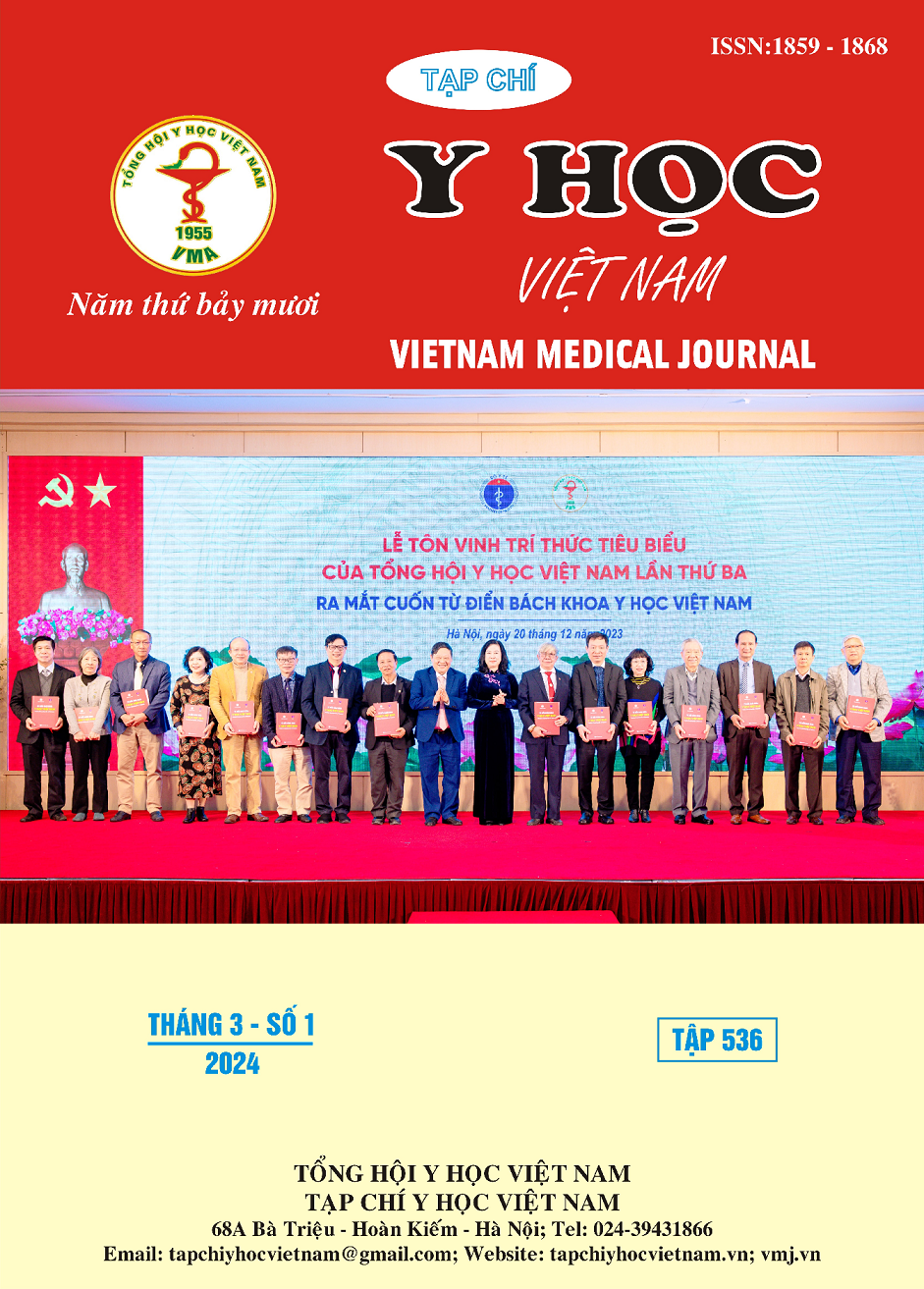CLINICAL AND OF PITYRIASIS VERSICOLOR AT NATIONAL HOSPITAL OF DERMATOLOGY AND VENEREOLOGY
Main Article Content
Abstract
Objectives: Survey of clinical characteristics and some related factors of pityriasis versicolor at National hospital of Dermatology and Venereology. Method: A descriptive cross-sectional study was conducted in 186 patients who were diagnosed with pityriasis versicolor at the National hospital of Dermatology and Venereology from September 2022 to August 2023. Results: The majority of patients were from 21 to 40 years old, accounting for 53,2%, and came from rural areas (62,4%), the ratio of male/female was 2,15/1. The most common associated factor is hyperhidrosis (72,8%). Most patients have had the disease for more than 6 months (40,3%). The most common location was the chest - abdomen (60,1%), followed by the back (58,1%), upper limbs (40,3%), and face - neck (28,5%). 82,8% of patients had white patchs, 78,5% brown patchs, and 25,8% pink patchs. 64% of patients had scaly skin. Itching is a common symptom, the majority of itching is mild or only itching when sweating, accounting for 62,4%. Conclusions: Diagnosing pityriasis versicolor is not difficult, it is characterized by hypopigmented patchs and hyperpigmented patchs in seborrheic skin areas. Hyperhidrosis is the most common favorable factor.
Article Details
References
2. Framil, V.M., et al., New aspects in the clinical course of pityriasis versicolor. An Bras Dermatol, 2011. 86(6): p. 1135-40.
3. Kaur, I., D. Jakhar, and A. Singal, Dermoscopy in the Evaluation of Pityriasis Versicolor: A Cross Sectional Study. Indian Dermatol Online J, 2019. 10(6): p. 682-685.
4. Archana, B.R., P.M. Beena, and S. Kumar, Study of the Distribution of Malassezia Species in Patients with Pityriasis Versicolor in Kolar Region, Karnataka. Indian J Dermatol, 2015. 60(3): p. 321.
5. Rao, G.S., et al., Clinico-epidermiological studies on tinea versicolor. Indian J Dermatol Venereol Leprol, 2002. 68(4): p. 208-9.
6. Harada, K., et al., Malassezia species and their associated skin diseases. J Dermatol, 2015. 42(3): p. 250-7.
7. D, G. and T. DM, The enigma of color in tinea versicolor. Pigment International, 2014. 1(1): p. 32-35.


